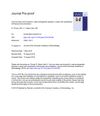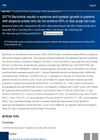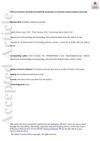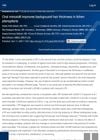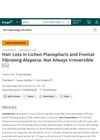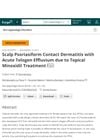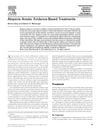Eyebrow Regrowth in Patients with Frontal Fibrosing Alopecia Treated with Low-Dose Oral Minoxidil
December 2020
in “
Skin appendage disorders
”
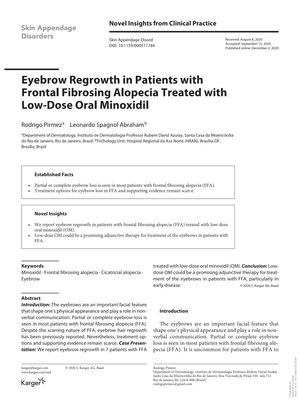
TLDR Low-dose oral minoxidil helped regrow eyebrows in women with Frontal Fibrosing Alopecia.
The study "Eyebrow Regrowth in Patients with Frontal Fibrosing Alopecia Treated with Low-Dose Oral Minoxidil" reports on the successful eyebrow regrowth in 7 female patients with Frontal Fibrosing Alopecia (FFA) treated with low-dose oral minoxidil. The patients, aged between 35 and 65 years, showed partial to almost complete eyebrow regrowth after 6 months of treatment. The initial daily doses ranged from 0.5 mg to 1.25 mg, with an increase to 2.5 mg/day for 5 patients at the 3-month mark. The regrowth was deemed cosmetically acceptable by both the physician and the patients, and no serious adverse events were reported. The study concludes that low-dose oral minoxidil could be a promising adjunctive therapy for eyebrow treatment in patients with FFA, particularly in early disease stages.
